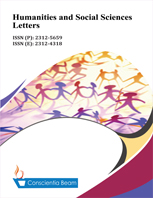Relationship between employer branding and employee performance: Mediating and moderating effects of supportive work environment and compensation and benefits
DOI:
https://doi.org/10.18488/73.v12i4.3952Abstract
Employer branding is a complex idea that is important in many different industries. It represents a company's ability to attract, engage and retain talent as well as its status as an employer. A strong employer brand transcends industry boundaries to impact the success and sustainability of businesses in today's competitive job market. The authors examined the effect of employer branding on employee performance by mediating and moderating roles of a supportive work environment and compensation and benefits respectively. The authors followed the quantitative methodology with a set of strategies and hypotheses and gathered numerical data. The data were gathered by surveying employees working in information technology sector companies in the city of Bangalore. The data analysis includes descriptive statistics, factor analysis and structural equation modeling analysis using SPSS and IBM AMOS version 28. The Cronbach’s alpha values of the reliability statistics ranged from 0.920 to 0.930 indicating the questionnaire’s internal consistency and reliability. The model fit indices CMIN/DF 1.389, CFI 0.966, GFI 0.952, TLI 0.961, IFI 0.966, NFI 0.904, SRMR 0.060, RMSEA 0.051 and PClose 0.448 indicate an excellent fit of the model. The constructs of compensation and benefits and a supportive work environment partially mediate employee performance through employer branding. The moderator’s supportive work environment strengthens the positive relationship between employee branding and employee performance. Strong employer branding is important for attracting top talent and improving employee performance in various industries but it is especially important in the IT sector.

